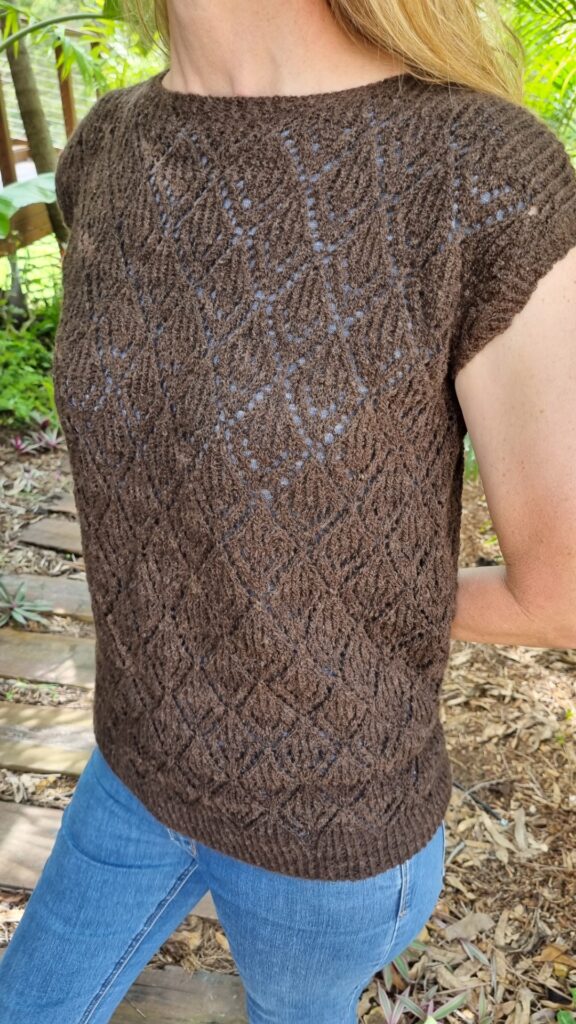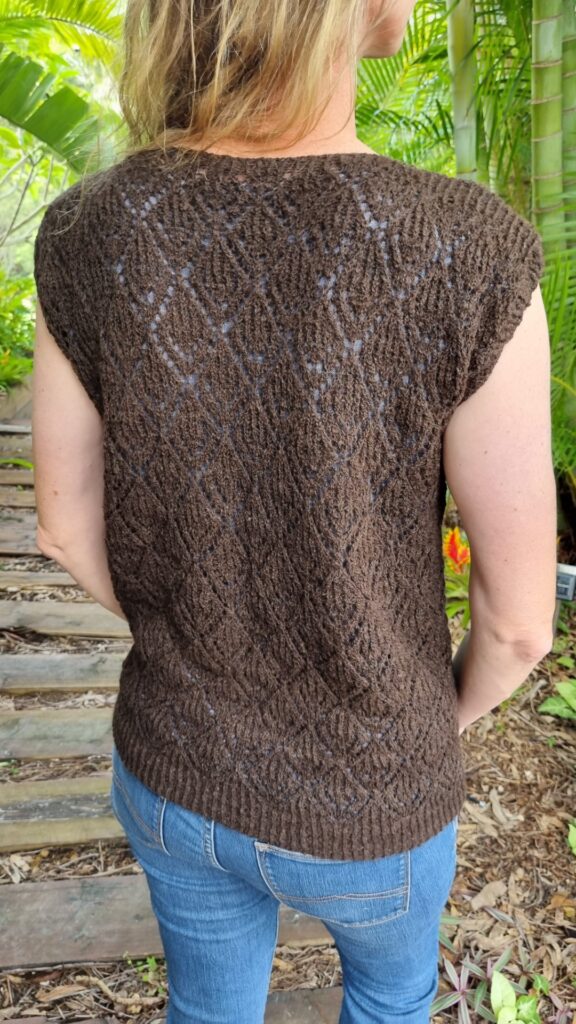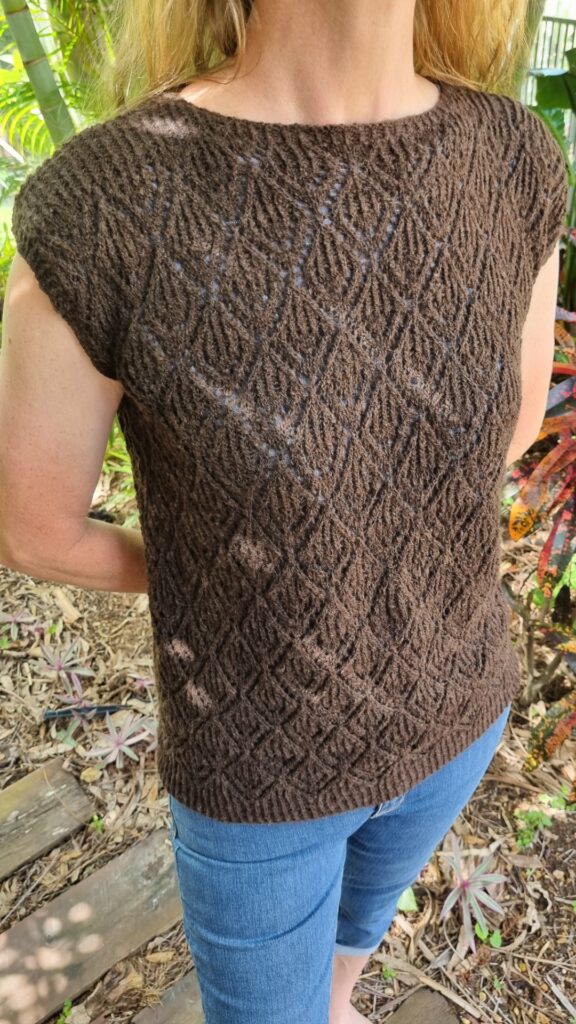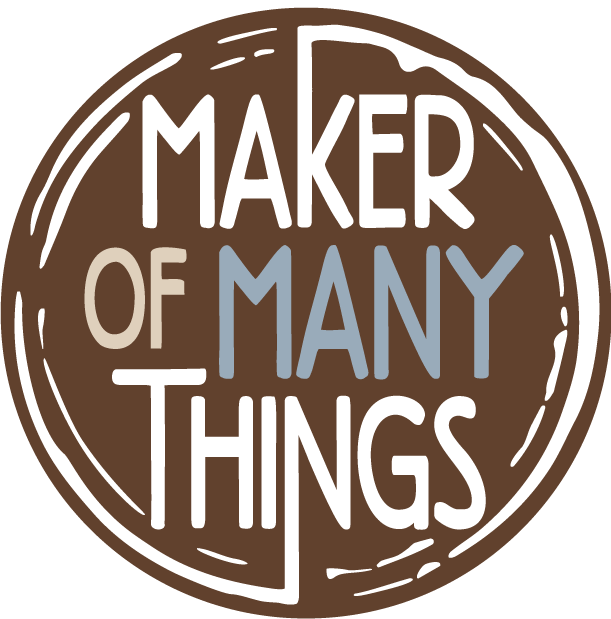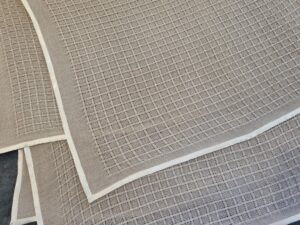A couple of years ago, a very dark brown alpaca fleece came into my possession. It was beautiful and soft, and rich in its natural colour. My recent spinning projects have had me blending alpaca with merino on the understanding that whatever I chose to knit would hold its shape better than with alpaca alone. I have also used the blending process to add some interest to the yarn, with a little pop of highlight colour blended in amongst the natural tones.
For this project, I wanted to feature the dark brown and I decided to keep it all natural – no dyed pops of colour. I already had a little bit of black alpaca in my stash and to add some merino to the mix, I purchased a dark brown 17.8 micron raw fleece online and quickly read up on how to wash it as I have only worked with alpaca and washed/processed merino up to now.

When the fleece arrived, I was really pleased with the colour and it was super fine and soft. I was a bit concerned about the way the tips of the fibre were kind of matted together, and I was a bit surprised at how sticky it was with the presence of lanolin. I guess my inexperience with raw sheep fleece showed as I tried to work out how to process it.
I needed to wash the fibre, but decided to have a play with test carding some bits first, and I could see those tips were going to give me trouble. I ended up trimming the tips off with scissors, as it was actually difficult to break the fleece apart for washing and I also needed to avoid them breaking off during the carding process, filling my fibre with annoying neps (little chunks of fluff that make the spun yarn lumpy)


I carefully washed the fibre by laying the trimmed staples’ neatly into washing bags. I used hot water and wool wash to soak and rinse, being super careful to avoid rough handling or rubbing as well as any big water temperature changes. The washing went well and the fibre was only a tiny bit greasy with no felting at all.
With my clean merino and carefully measured out brown and black alpaca, I started the blending process. For this project I used my drum carder, then removed the blended fibre with a ‘diz’ (which in my case was just a washer that I found in the shed haha) to make a roving to spin from. I was pretty happy with this technique and will look into getting a more suitable diz, probably with a smaller hole, for use in the future.


While the work I had done with cutting those tips off of the merino fibre had clearly been worthwhile, some of the superfine fibre had still broken up a little while carding and my prepared fibre was full of little lumps of fluff. I think, in hindsight, maybe I didn’t get all of those tips off or maybe the drum carder was just a bit too rough for that super fine fibre in general. Not to worry, it was still usable, just a little bit slower to spin than without the lumps!
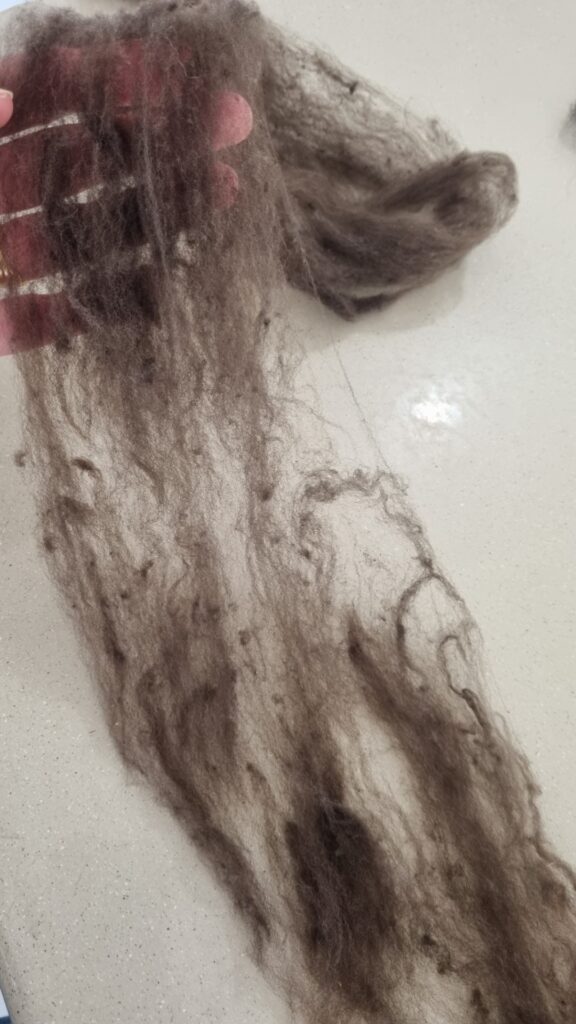
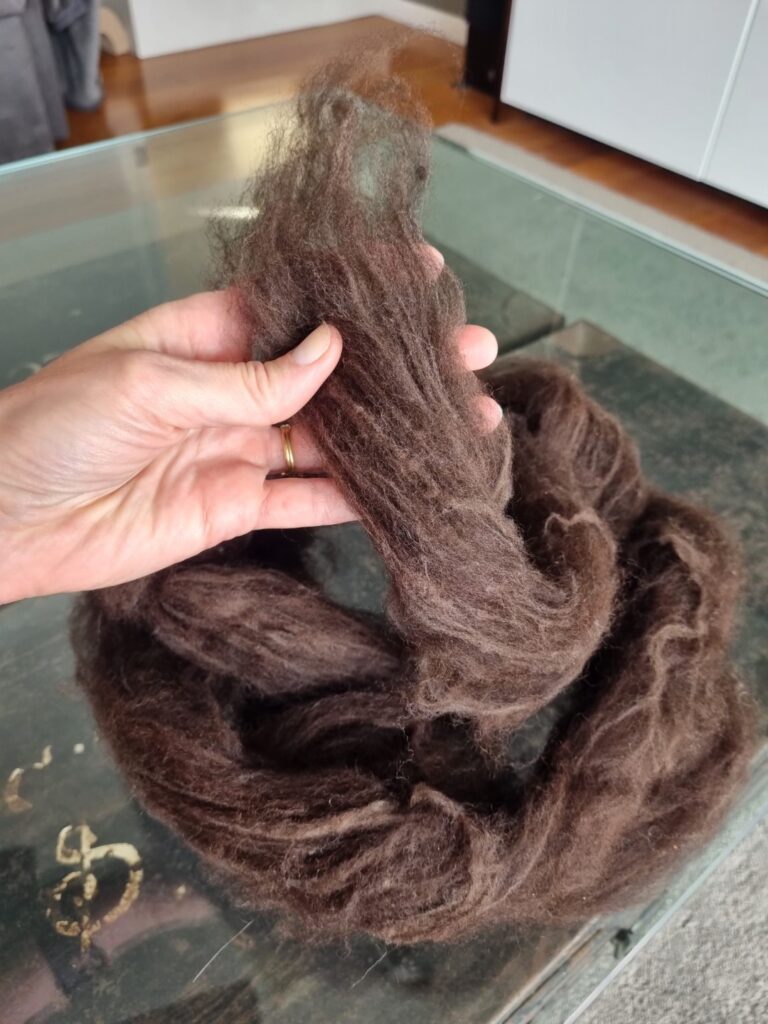
I think the lesson for me there, is that I didn’t really need such a fine micron fibre. Maybe my style is better suited to fleeces that I can be a little rough with, because I am always in too much of a hurry to prepare and spin from something so delicate!
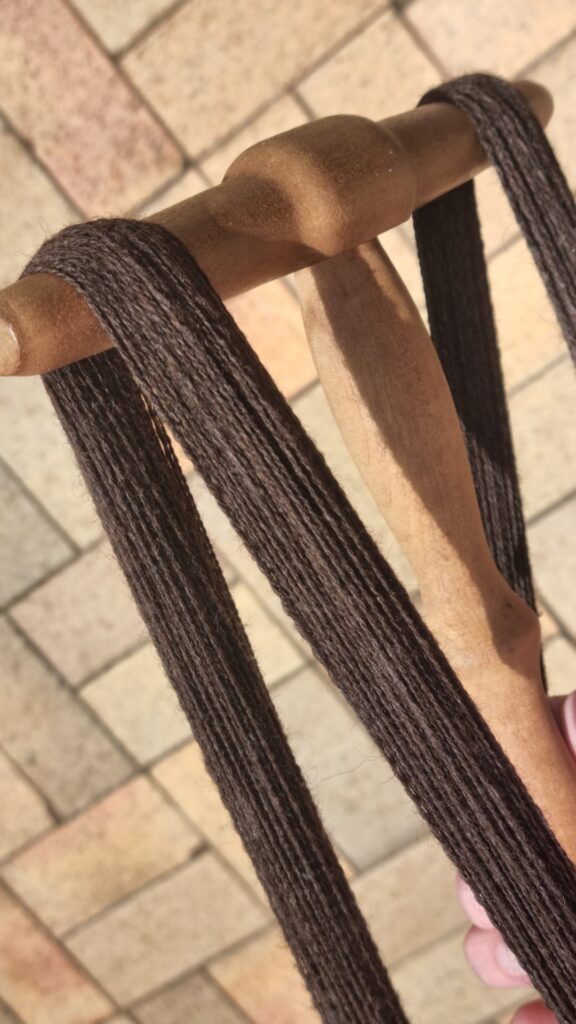
Life got busy and I spun this fibre for months, just a little at a time whenever I had a chance. I wanted to knit this up into something nice and light weight that would be suitable for our warm climate.
I trialled a few patterns, finding that the dark brown colour was not suitable for many designs as the stitches were sometimes lost in the darkness. I realised that a lacier design was what I needed and was really happy when I tested the ‘Monterey Tee’ pattern by Kate Gagnon Osborne for ‘Interweave knitting patterns’. This one looked great with the dark brown, and would give me a light weight garment that I would be able to wear when the weather is still warmish.
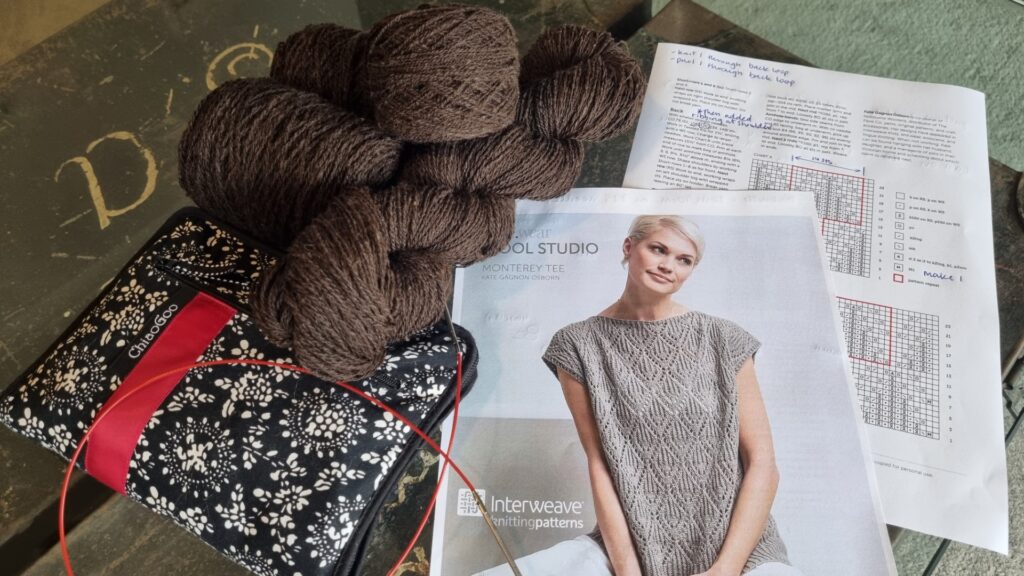
The pattern was meant to be knitted as a front and back panel with side seams, but as someone who hates seams on knitted garments I was able to easily modify the instructions to work from the bottom up on circular needles, then separate out the front and back once I had reached the required body length to the armholes. I love that with circular knitting, I can try it on and know for sure that the sizing is right as I go.
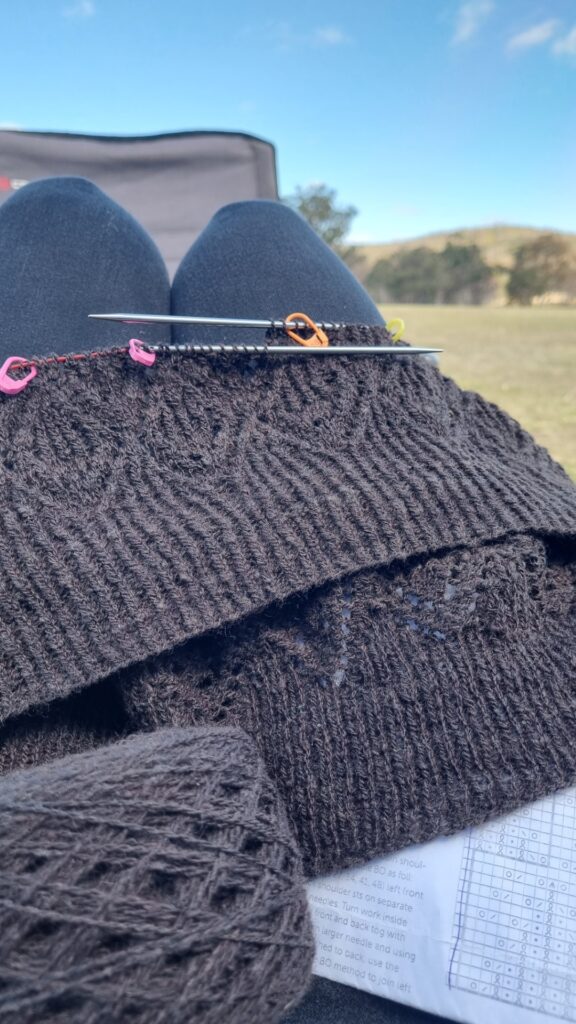
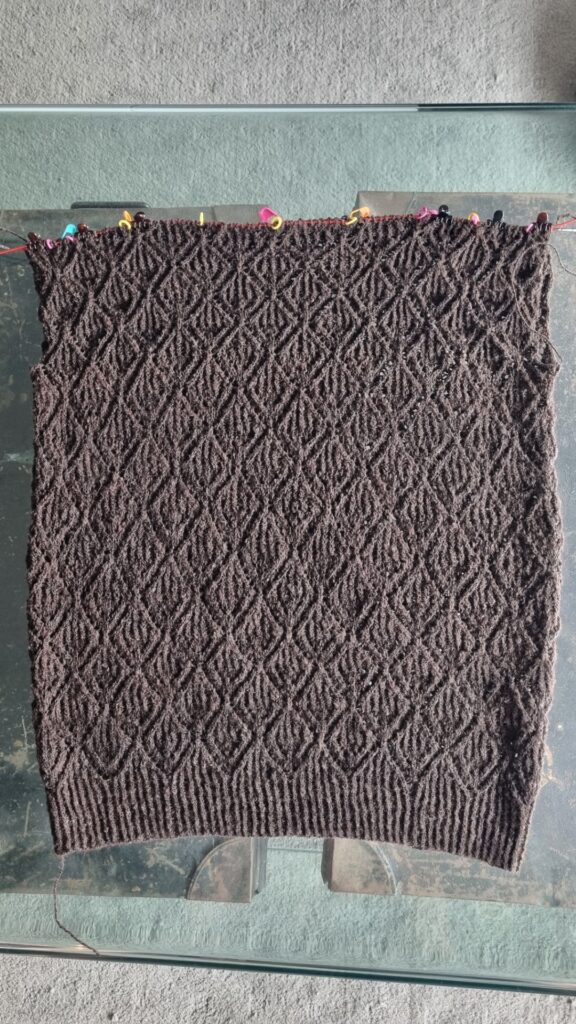
My body shape seems to allow for a simple rectangle for garments like this, so continuing up to the shoulders was easy, before doing some basic shaping using short rows and a 3 needle cast off at the shoulders.
I considered adding short sleeves to this project, but the pattern was always meant to be a drop shoulder design and so I stuck with that. I possibly could have made the arm holes a little bigger by doing a few more rows before shaping and joining the shoulders, but I was concerned that this may stretch a little in time and would rather start with them on the smaller side than have them drop and become too big. Time will tell if that happens or not, I guess.
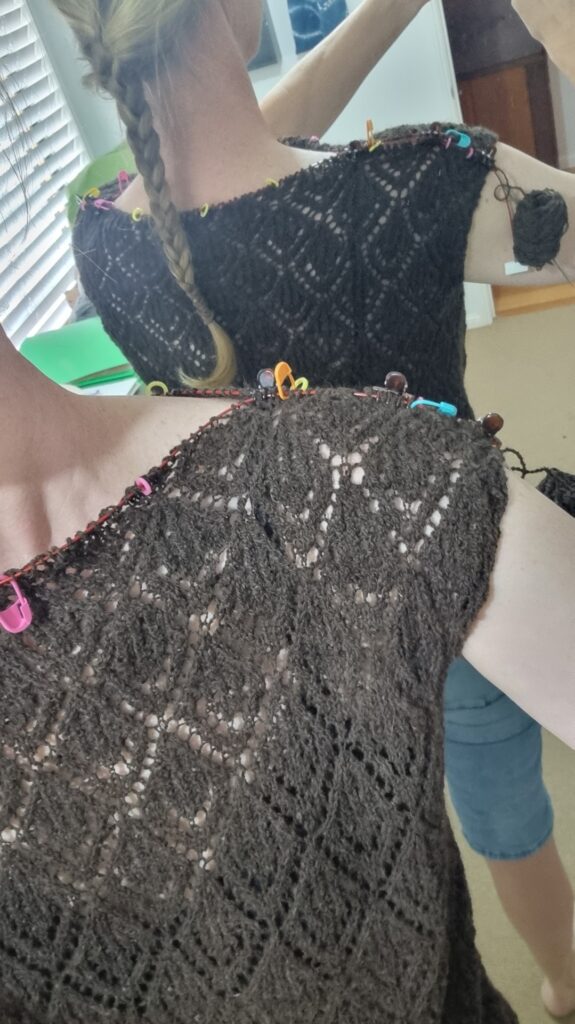
If you have never done a lace stitch before, don’t be scared off because it was much easier than I expected. Using stitch markers was essential as a way to follow the pattern but also allowed me to quickly notice a mistake and fix it before getting too far along. This project has taught me so much, from fibre prep to knitting technique – things I would do differently and things that I am keen to do again.
Once again, I am really happy with this finished knit! It fits perfectly and will definitely get lots of wear 😊
